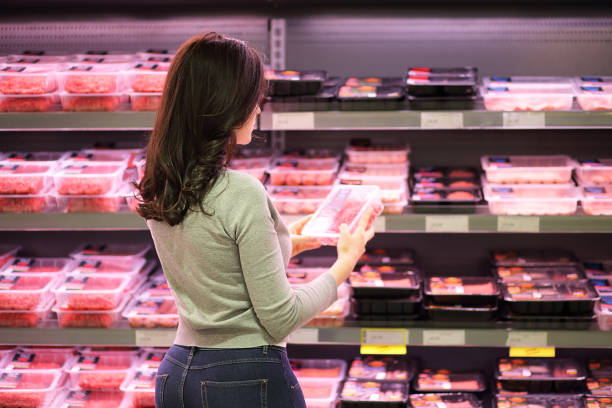Canadian food suppliers warn grocery chains that more price hikes are coming

Canadian food suppliers are once again issuing notices to grocery retailers, informing them of upcoming price hikes
by Brett Bundale – Canadian Press
The letters signal more price increases will hit grocery stores this fall in a year that has already seen nearly double-digit increases in food costs.
In some cases, the higher prices are due to the Canadian Dairy Commission’s approval of a second milk price increase this year. Farm gate milk prices are set to go up about two cents per litre, or 2.5 per cent, on Sept. 1.
Yet dairy-processing companies appear to be tacking on their own increases as well — the so-called piggybacking of price hikes industry observers warned would happen.
“In addition to these regulated increases, there have been unprecedented and sustained inflationary pressures affecting the supply chain“
In some cases, the higher prices are due to the Canadian Dairy Commission’s approval of a second milk price increase this year. (Sean Kilpatrick/The Canadian Press)
Lactalis Canada, for example, said in a letter to customers it must implement an average national market increase of five per cent this September, a rate it said that takes into account the CDC pricing increase, as well as “significant inflationary costs” the company is facing.
Arla Foods Canada issued a similar notice, saying price increases on its products coming this September reflect higher milk ingredient costs and the “inflationary impacts across freight and packaging.”
Saputo Dairy Products Canada also said it would implement price increases in the five per cent range, depending on the category.
“Producers have faced increased production costs, as well as rising feed, energy and fertilizer costs, which have had a significant impact on this year’s farm gate milk price adjustment,” Saputo said in a letter to its retail customers.
“In addition to these regulated increases, there have been unprecedented and sustained inflationary pressures affecting manufacturing, energy, labour and distribution costs throughout the entirety of the supply chain.”
Food prices have increased at by almost 10 per cent in the past year. (Carlos Osorio/Reuters)
The price increases shared with grocers underscore how regulated dairy price hikes are compounded by additional price increases throughout the supply chain, said Gary Sands, senior vice-president of public policy with the Canadian Federation of Independent Grocers.
“The timing of the increases almost seems like they are piggybacking on top of the regulated increases,” he said. “The net effect is to further exacerbate the issue and concerns around affordability.”
Those concerns are especially acute in rural and remote communities, where transportation and fuel surcharges are higher, Sands said. “The increase in price for these essential products is of particular concern in those communities.”
The price of food purchased at stores rose 9.7 per cent in May compared with a year ago, as the cost of nearly everything in the grocery cart climbed higher, Statistics Canada said last month.
Sylvain Charlebois, a professor of food distribution and policy at Dalhousie University, said the pace of food price increases could rise to 10 per cent before starting to slow.
“We’re expecting food inflation to peak between now and the end of September,” he said. “It may actually go north of 10 per cent before things start to calm down.”
The U.S. Bureau of Labor Statistics said Wednesday the inflation rate for food consumed at home in that country hit 10.4 per cent in June, the largest 12-month increase since 1981.
Charlebois said Statistics Canada is expected to post similar food inflation figures when it reports the consumer price index for June next week.
Surging prices will put pressure on grocers to promote their private label options, also referred to as a retailer’s house brand, he said.
“Consumers are trading sideways or trading down on anything and everything right now and switching to discount stores,” Charlebois said. “They’re really more sensitive about the cost of living.”
Meanwhile, the letters sent by suppliers to retailers outlining the reasoning behind the cost increases is part of an effort to not be accused of “greedflation,” he said.
“The last thing processors want is to become a scapegoat and to be blamed for higher food inflation,” Charlebois said.
“Inflation is impacting every single Canadian out there, but it’s also impacting the political economy of food and how the food industry is being perceived.”
Lactalis said in its letter to customers that it is “very cognizant of the impact of inflation on consumers.”
“As we are all aware, this cycle of inflation is in large part being driven by the latest phase in the evolution of the pandemic and by the global geopolitical situation sparked by Russia’s invasion of Ukraine and the ongoing conflict,” the company said.













